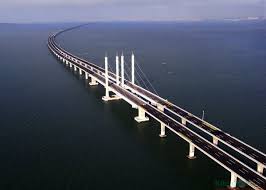Second Longest Africa Bridge: The Third Mainland Bridge

The Third Mainland Bridge is an impressive infrastructure feat that serves as a symbol of connectivity, progress, and development in Nigeria. Stretching over the Lagos Lagoon, this bridge holds great importance in the transportation network of Lagos and acts as a crucial link for millions of people in the area.
The construction of the Third Mainland Bridge started in 1980 during the military government of Nigeria. The bridge was built to ease traffic congestion and create an essential connection between Lagos Island and the mainland. It connects densely inhabited areas and significant economic zones.
The Third Mainland Bridge is a remarkable feat of engineering, stretching approximately 11.8 kilometers (7.3 miles) across the Lagos Lagoon. It is a sophisticated structure constructed of multiple sections, viaducts, and ramps, supported by sturdy pillars and built to withstand the dynamic forces of traffic, weather, and water currents.
The Third Mainland Bridge is one of the longest bridges in Africa and serves as a crucial transportation link for Lagos. It accommodates the movement of vehicles, pedestrians, and goods, relieving traffic on other routes and providing an essential connection for commuters traveling to and from the busy city center.
The bridge has played a vital role in the economic progress of Lagos and Nigeria. By improving connectivity and accessibility, it has facilitated trade, commerce, and business activities, leading to overall development and growth in the region. The bridge’s strategic location has also attracted investments, industries, and infrastructure developments along its corridors, further boosting economic development.
The Third Mainland Bridge holds great economic importance, but it also plays a crucial role in connecting communities and providing access to essential services such as healthcare facilities and educational institutions. Along with its practical uses, the bridge also attracts tourists and visitors due to its scenic views of the Lagos Lagoon. It has become a cultural landmark and a hub for leisure activities, bringing people together from different parts of the city.
The Third Mainland Bridge has been facing challenges related to maintenance, wear and tear, and increasing traffic volumes for many years. Regular maintenance and rehabilitation works are crucial to ensure the bridge’s structural integrity, safety standards, and long-term sustainability. Government agencies and stakeholders are working together to tackle these challenges and implement necessary upgrades.
The creation and functioning of the bridge have significant environmental consequences, particularly in relation to water quality, aquatic ecosystems, and the expansion of urban development along the waterfront. In order to manage the environmental impact and conserve natural resources, it is essential to implement sustainable practices, conduct environmental impact assessments, and employ mitigation measures.
As we look to the future, we recognize that the Third Mainland Bridge is an essential element of Lagos and Nigeria’s development plan. As we continue to work towards improving transportation systems, increasing connectivity, and investing in infrastructure upgrades, the role of the bridge in the changing urban landscape and sustainable growth strategies will be shaped.
The Third Mainland Bridge is an iconic structure that represents progress, connectivity, and resilience in Nigeria. Its significance in transportation, economy, society, and the environment highlights the importance of investing in strategic infrastructure to drive sustainable development and enhance the quality of life for communities. In conclusion, the bridge stands as a testament to the positive impact of such investments.



